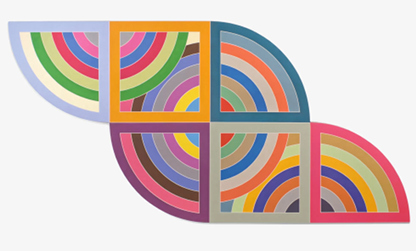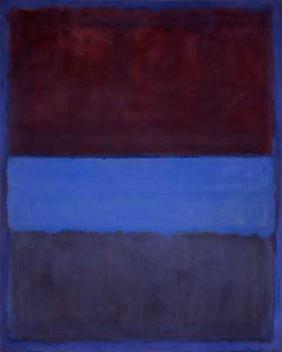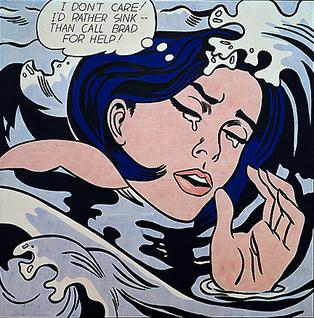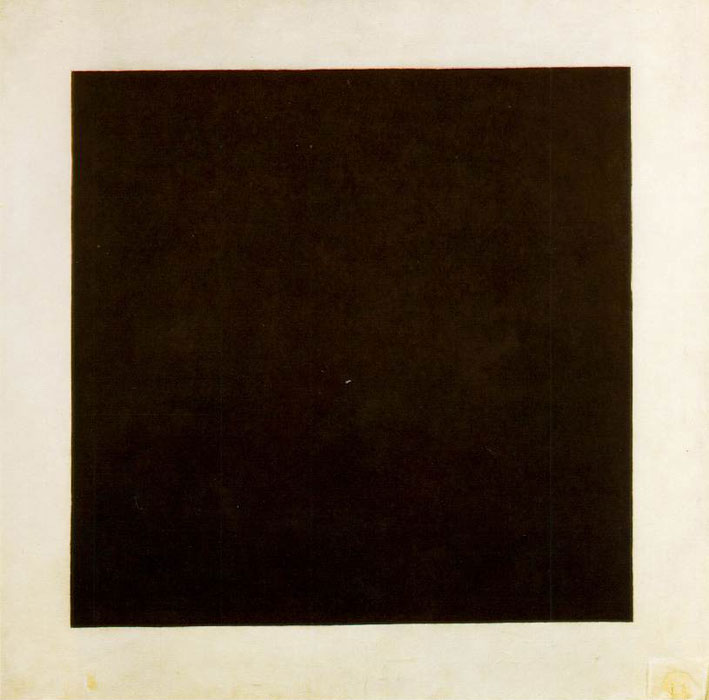.

Painting Number 2: Franz Kline, 1954 (Museum of Modern Art, New York)
Rothko’s hovering tiers of atmospheric color attack Keokuk, Iowa.
Johns’s tonic simplicity of stripes and circles is in some ways a cop-out.
De Kooning, Pollock and Kline’s athletic calligraphy derives from surfing.
Stella’s monastic designs appeal to lemurs.
Mondrian’s black bars on white grounds rise and shine.
Newman’s variations on an ostensibly straight line are in fact crooked.
Ad Reinhardt’s black paintings were left out in the rain overnight.
Manet’s qualities of absence cause skin disease.
Andy Warhol’s rows of ten-by-twenty cans don’t contain Campbell’s soup.
Kenneth Noland’s target, chevron and stripe paintings mime the noodling movements of antique biplanes.
Donald Judd and Robert Morris’s stubbornly indivisible equal-unit designs suck.
Johns’s sculpmetal embalmments of a light bulb and a flash light emit a glow of total friendliness.
Monet’s chromatic and luminary variations on such themes as a haystack look OK.
Frank Stella’s pictures of “nothing” are just that.
Roy Lichtenstein’s Pop paintings bubble upwards.
Le Corbusier’s 1939 plan for an infinitely expandable museum went down the toilet.
Malevich and Mondrian’s conceptual idealism threw us off the track.
Judd and Morris’s antagonism to marks of personal handicraft is like God’s.
Mondrian and Newman’s Eureka quality of beauty fails completely.
Stella’s art turns me on.
Jasper’s Dilemma is the state motto of Utah.
Mondrian’s tough irreducible nut of radiant energy indicates drug abuse.
Stella’s enclosed field of multiple unfocused activities shows that he is a secret jackoff artist.
Kenneth Noland’s chevron paintings of 1963-64 were commissioned by an insect.
Jasper Johns’s “0-9” lithographs of 1963 tell us to make love not war.
Miriam Schapiro, Larry Zox, Ron Davis and Darby Bannard’s investigation of fictive depth on a plane surface would be possible only under capitalism.
Pollock and Kline’s participation in a field of forces is old hat.
Morris Louis and Kenneth Noland’s searing antibodies of color make whoopee.
Robert and Sonia Delaunay’s rainbow disks smack of homework.
Newman’s thin bands on open fields of color decorate Uranus.
Roy Lichtenstein’s parodies of the aggressively “moderne” fooled the police.
Darby Bannard’s curious pastel blandness relates to a hatred of arithmetic.
De Kooning’s impact is not to be spoken of here.
Woman V: Willem De Kooning, 1952-1953 (National Gallery of Australia, Canberra)

Onement I: Barnett Newman, 1948 (Museum of Modern Art, New York)

Harran II: Frank Stella, 1967 (Guggenheim Museum, New York)

No. 5: Jackson Pollock, 1948 (private collection)
Flag: Jasper Johns, 1954-1955 (Museum of Modern Art, New York)

Composition No. 10: Piet Mondrian, 1939-1942

Campbell's Soup Cans: Andy Warhol, 1962 (Museum of Modern Art, New York)

Bridge: Kenneth Noland, 1964

No. 61 (Rust and Blue): Mark Rothko, 1953 (Museum of Contemporary Art, Los Angeles)

Drowning Girl: Roy Lichtenstein, 1963

Black Square: Kazimir Malevich, 1913 (State Russian Museum, St. Petersburg)
33 Statements: from Neil Young, 1971



No comments:
Post a Comment